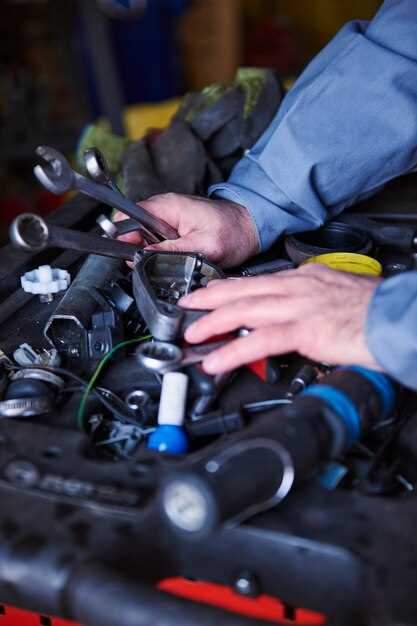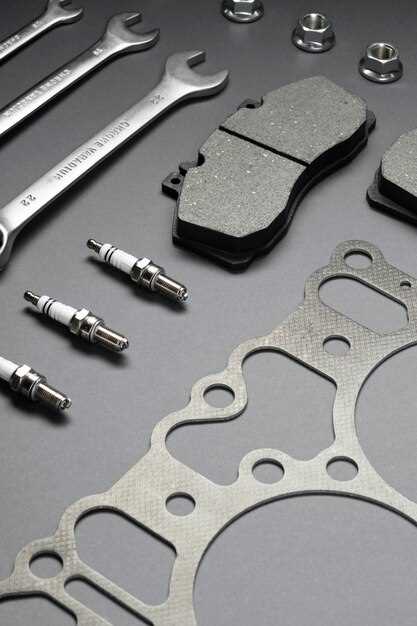
Are Aftermarket ECUs Worth It for Racing?
- George Harris
- 0
- Posted on

In the competitive world of motorsports, every fraction of a second counts. As teams and drivers seek to maximize their racing performance, many turn to modification options that promise enhanced efficiency and power. Among these options, aftermarket Engine Control Units (ECUs) have emerged as a pivotal component for tuning vehicle performance beyond factory specifications.
Aftermarket ECUs are designed to replace the vehicle’s original ECU, providing greater flexibility in terms of engine tuning. They offer advanced programming capabilities that allow for precise adjustments to fuel maps, ignition timing, and other critical parameters. This customization can lead to significant performance gains when executed correctly, making them a popular choice for serious racers looking to outpace their competition.
However, the decision to switch to an aftermarket ECU should not be taken lightly. While the potential benefits are substantial, they also come with their own set of challenges. Proper installation and tuning require a deep understanding of engine dynamics and may necessitate additional upgrades to other vehicle systems. Consequently, the effectiveness of an aftermarket ECU in improving racing performance often hinges on the expertise of the tuner and the specific goals of the race team.
In this article, we will explore the various advantages and potential drawbacks of aftermarket ECUs in racing contexts. We will dive into how these units can optimize vehicle performance, enhance lap times, and discuss the importance of professional tuning to unlock their full potential.
How Aftermarket ECUs Enhance Engine Tuning Flexibility
Aftermarket Engine Control Units (ECUs) revolutionize the process of engine tuning by providing a wider range of control over various engine parameters. Unlike factory-installed ECUs, aftermarket versions are designed to be highly customizable, allowing users to modify fuel maps, ignition timing, and boost levels depending on individual performance goals. This enhanced flexibility is paramount in the competitive racing environment, where specific adjustments can lead to significant performance gains.
One of the primary benefits of aftermarket ECUs is their capability to accommodate custom tuning. Tuners can access detailed engine data, enabling real-time adjustments tailored to specific track conditions or driving styles. This feature allows them to adapt the engine’s performance characteristics on-the-fly, optimizing power delivery and responsiveness according to the demands of the race.
Additionally, aftermarket ECUs often include advanced features such as launch control, flat-foot shifting, and anti-lag systems, which can contribute substantially to overall performance. These features allow drivers to maximize acceleration and maintain engine efficiency, particularly in high-stakes racing scenarios where every millisecond counts.
Aftermarket ECUs also support a broader range of modifications, including upgraded turbochargers, exhaust systems, and fuel injectors. By providing the option to recalibrate parameters for these upgrades, aftermarket ECUs ensure that modifications can be fully utilized, maximizing the engine’s potential and enhancing overall performance. This level of adaptability is vital for serious racers focusing on precision engineering.
Furthermore, many aftermarket ECUs come with user-friendly software that enables tuners to make adjustments without specialized tools. This accessibility allows drivers and teams to experiment with different tuning strategies easily, paving the way for innovative racing techniques and approaches. The support for data logging and performance analytics further enhances the tuning process, giving real-time insights into engine performance during practice and races.
In conclusion, the enhancement of engine tuning flexibility through aftermarket ECUs is a game-changer for racing performance. With the ability to customize settings extensively, accommodate upgrades, and leverage advanced features, aftermarket ECUs are invaluable tools for racers aiming to push their vehicles to the limit.
Evaluating the Impact of Aftermarket ECUs on Vehicle Reliability

The introduction of aftermarket Engine Control Units (ECUs) into racing applications brings a dual-edged sword regarding vehicle reliability. On one hand, these devices allow for enhanced tuning capabilities, which can significantly improve engine performance under specific racing conditions. However, the extent to which they affect reliability can vary based on several factors, including the quality of the ECU, the tuning process, and the overall compatibility with existing vehicle systems.
One crucial aspect to consider is the potential for improved engine management. Aftermarket ECUs often provide advanced features such as customizable fuel maps, ignition timing adjustments, and improved throttle response. These capabilities can lead to greater efficiency and performance, potentially making the vehicle more reliable under competitive racing conditions where precision and responsiveness are paramount.
However, the reliance on aftermarket ECUs can also introduce risks. Poorly designed or improperly calibrated units may lead to engine misfires, excessive wear, or even catastrophic failures. The lack of validation from the original manufacturers means that critical parameters may not be optimized for longevity, leading to failure under stress. Additionally, integrating an aftermarket ECU with existing vehicle systems may cause unforeseen compatibility issues, further jeopardizing reliability.
Another vital consideration is the installation process. A professionally installed and tuned aftermarket ECU can significantly enhance reliability by ensuring that the engine operates within safe parameters. Conversely, a hastily installed unit can lead to incorrect sensor readings, miscommunication with other vehicle systems, and ultimately, increased chances of engine failure. Therefore, the proficiency of the technician performing the installation plays a crucial role in determining long-term reliability.
Lastly, ongoing maintenance and support are essential when using aftermarket ECUs. Regular updates and tuning adjustments can mitigate some reliability issues, as they allow the vehicle to adapt to changing conditions on the track. Engaging with communities and experts who specialize in aftermarket systems can also provide valuable insights into best practices, enhancing both performance and reliability.
In summary, while aftermarket ECUs may offer significant performance benefits in racing environments, their impact on vehicle reliability is multifaceted. A careful evaluation of the ECU’s quality, installation methods, and ongoing support is critical to ensuring that the benefits do not come at the expense of reliability.
Cost-Benefit Analysis: Are Aftermarket ECUs Worth the Investment for Racers?

When considering performance upgrades for racing, aftermarket Engine Control Units (ECUs) often emerge as a primary investment. Evaluating their worth requires a careful cost-benefit analysis that weighs potential performance gains against the associated costs.
Firstly, aftermarket ECUs typically allow for extensive tuning capabilities. This adaptability enables racers to optimize their vehicle’s performance to match specific racing conditions, resulting in a more responsive and powerful engine. With the ability to adjust fuel maps, ignition timings, and boost levels, competitors can achieve a performance edge, which is crucial in competitive environments.
However, the initial investment in an aftermarket ECU can vary significantly, ranging from a few hundred to several thousand dollars depending on the brand, features, and compatibility with the vehicle. Moreover, there are costs associated with installation and tuning, often requiring the expertise of a professional. For budget-conscious racers, these upfront expenses can be considerable.
In terms of benefits, improved performance can translate into faster lap times, enhanced throttle response, and increased reliability during races. These factors can provide racers with a competitive advantage, potentially leading to higher placements and, ultimately, increased prize earnings. Furthermore, some aftermarket ECUs come with data logging features that allow racers to analyze performance metrics, aiding in better decision-making and strategy development during races.
On the flip side, the potential downsides include the risks associated with improper tuning. A poorly calibrated ECU can lead to engine damage, resulting in costly repairs that outweigh any performance benefits realized. Additionally, racers must consider the potential for increased fuel consumption, which may reduce overall efficiency and increase operational costs during events.
In conclusion, the decision to invest in an aftermarket ECU hinges on the racer’s specific goals, budget, and willingness to manage the risks involved. For serious competitors aiming for the highest level of performance, the investment can be justified, provided that proper tuning and support are prioritized. In contrast, casual racers or those with limited budgets may find that the returns do not outweigh the costs. Ultimately, comprehensive research and careful consideration of both financial implications and performance aspirations will determine the value of aftermarket ECUs in the racing context.
